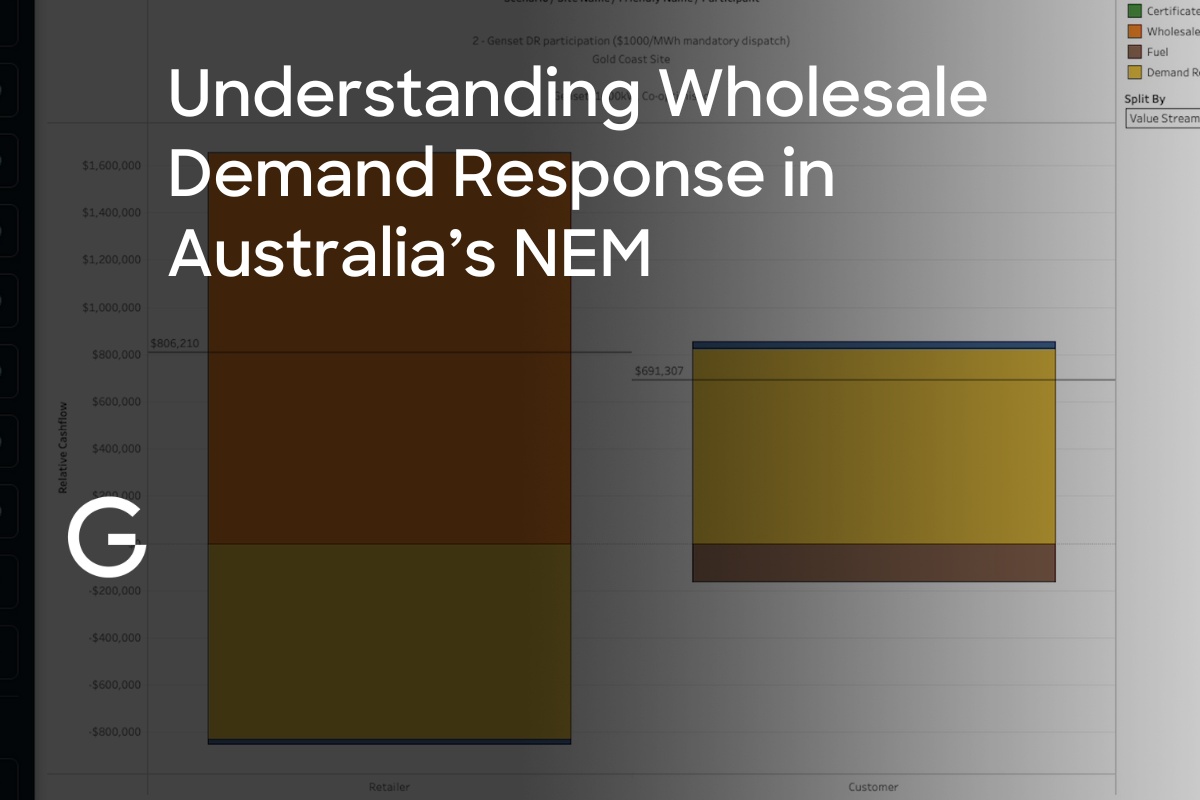Understanding Wholesale Demand Response in the NEM

Wholesale Demand Response (WDR) enables large energy users to participate directly in Australia’s National Electricity Market (NEM) by adjusting their electricity consumption in response to wholesale market signals.
Unlike traditional Economic Demand Response, which is typically facilitated through energy suppliers/retailers, WDR allows consumers - or their Demand Response Service Providers (DRSPs) - to bid demand reductions into the market independent of the retail supplier.
This means that eligible sites can be paid for reducing their electricity use during periods of high wholesale prices, helping to balance supply and demand on the grid. Participation is flexible and can involve deploying embedded energy resources like gensets or batteries, or by reducing or shifting large discretionary loads.
Introduced in October 2021, WDR requires sites to meet very strict baselining requirements to ensure that changes in consumption are measurable and verifiable.
Barriers to Participation and Program Uptake
It is important to note that WDR is just one mechanism for contracting demand response, which has traditionally been offered by suppliers/retailers to their large electricity customers. However, the introduction of WDR has disrupted this conventional relationship, creating friction in the program’s uptake. Many customers are reluctant to adopt WDR due to the need for separate contracts - one for electricity supply and another for demand response - which adds complexity and administrative burden. At the same time, retailers have little incentive to promote WDR participation, as they are not obligated to do so and often prefer to enroll their customers in their own in-house demand response programs.
These dynamics have collectively slowed the growth of the WDR program, with only 74MW of total capacity registered as of May 2025. It will be interesting to see if the Nelson Review recommends any changes.
Nonetheless, WDR represents a potentially meaningful step toward unlocking the value of demand-side flexibility. By turning reduced consumption into a tradable asset, it gives energy users greater control over their energy costs while supporting grid reliability and the broader transition to a more dynamic, renewable-powered energy system.
The Role of Gridcog in Modelling Demand Response
With Gridcog you can model economic demand response and reliability (capacity) demand response contracts for embedded generation, storage, and flexible load.
To demonstrate this, Scott shows us how to configure an economic demand response contract in Gridcog, all with customisable dispatch requirements, participants, and commercial structures:
If you’re interested in learning more about the Australian NEM, or want to discuss how Gridcog can model your energy projects, reach out to the team here.
This blog was first featured in our Thinking Energy newsletter, which you can subscribe to here.







